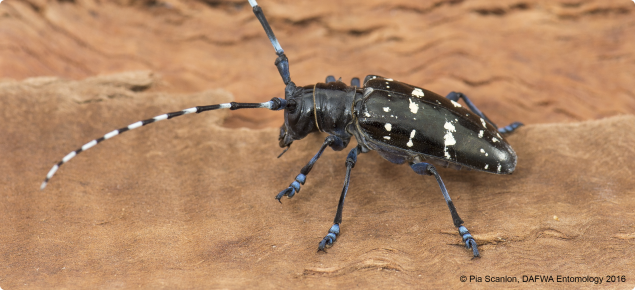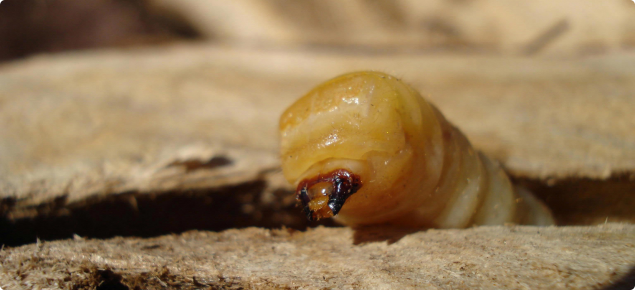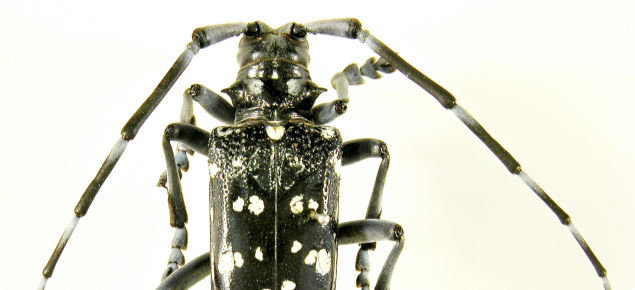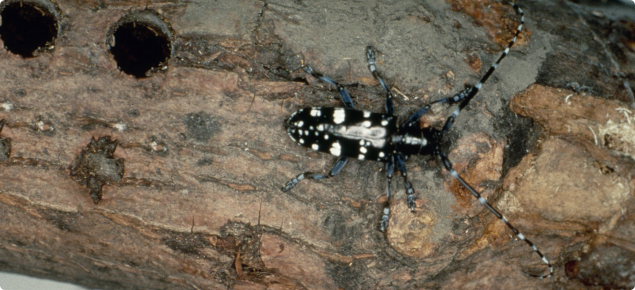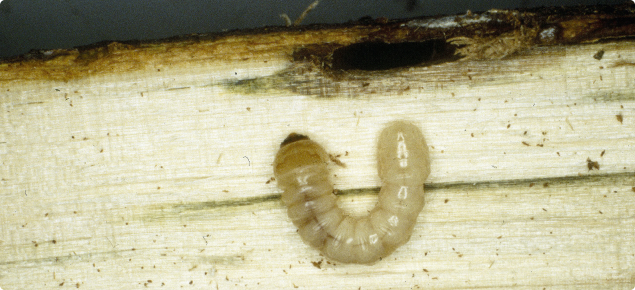July 2016 detection
In July 2016 one female Asian longhorned beetle was found in an industrial warehouse in Perth.
The Department of Agriculture and Food, Western Australia (now Department of Primary Industries and Regional Development) undertook surveillance and there were no further detections.
It is likely that the beetle was a single hitchhiker in imported cargo, however it is not known where the beetle originated.
Alert for industrial areas
DAFWA is asking industrial warehouses in receipt of imported cargo to keep a lookout for suspect beetles. Refer to these web pages to know how to recognise Asian longhorned beetle.
This beetle is most likely to arrive in imported timber and wood used for pallets and other packing materials from Asia or North America.
Report Asian longhorned beetle
If you suspect this pest call DAFWA’s Pest and Disease Information Service on 1800 084 881 or go to the mypestguide web page to download the free mypestguide reporter app, or make an online report.
By joining the MyPestGuide reporting community you can report any suspect pests at any time. Use the app to send an image to DAFWA for identification and experts will respond directly to your phone.
Description
- An adult beetle is about 20-35mm long and 7-12mm wide.
- Its body is jet black in colour with white spots.
- The antennae are black with whitish-blue rings and can be up to two and a half times the body length.
- Eggs are about 5-7mm long, off-white in colour, rectangular in shape and are laid under bark.
- The larvae look like grubs and can grow up to 50mm long.
What damage does it cause?
Adults chew slits in the bark of their host plants to lay eggs. After the eggs hatch, the developing larvae feed under the bark, forming tunnels.
Evidence of larval infestation appears as chewed wood or frass that has been ejected from the tunnels. Exit holes in timber are about finger width. Over time, the feeding larvae cause a decline in the tree’s health, which will eventually kill it.
Adults damage trees by feeding on leaves and bark. They damage the fruiting shoots of fruit trees which results in a loss of harvest.
Distribution
Asian longhorned beetle is indigenous to China but has spread to other countries including North Korea, South Korea and Taiwan.
It is the subject of eradication campaigns in Canada and a number of states in the USA, as well as within the European Union.
Hosts
Poplar trees are considered the major host. A wide range of other trees are also hosts, including alder, apple, ash, birch, elm, maple, mulberry, pear, plane tree, prunus, robinia, roses and willow.
The potential effect of Asian longhorned beetle on Australian native plants is not known.
What to look for
Look for larval tunnels in the wood up to 15mm wide. Oval-shaped exit holes about 10-15mm wide.
Look also for sawdust-like frass falling from damaged timber.

